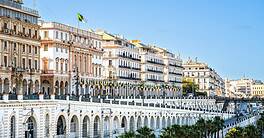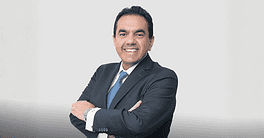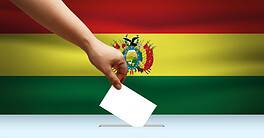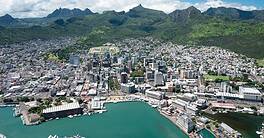The Middle East, especially the Gulf region, expects good times ahead.
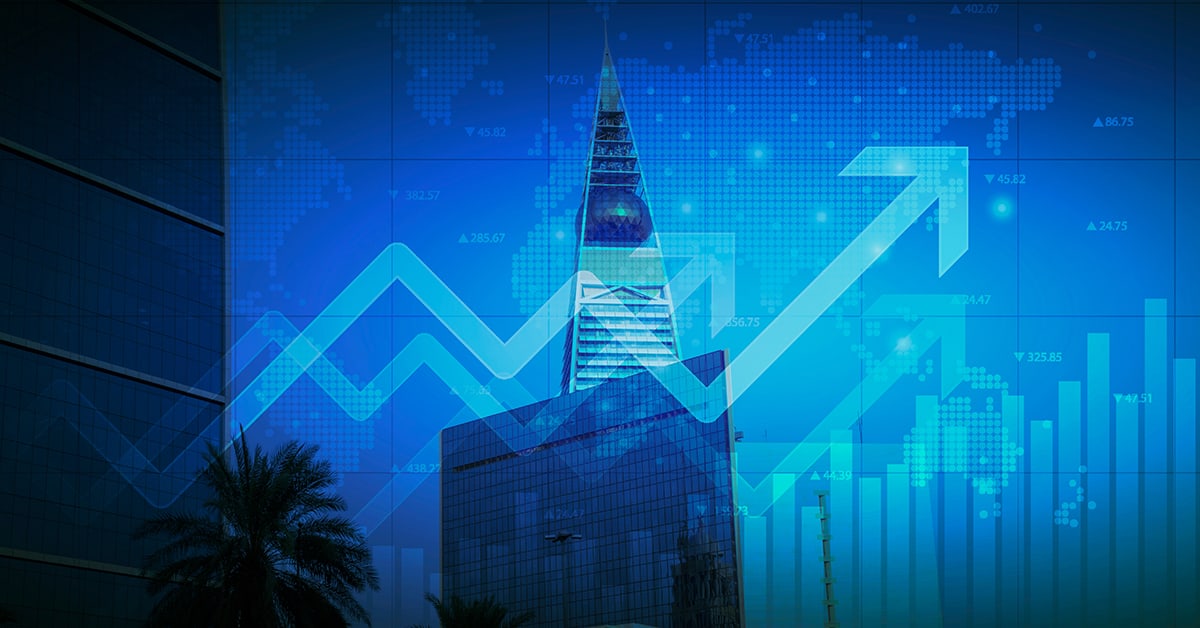
In 2023, the Middle East and North Africa (MENA) region should grow 3.5%, twice as fast as the 1.7% global average, says the World Bank—thanks mainly to high energy prices and increased oil production. The war in Ukraine and its subsequent sanctions have many nations seeking alternative energy suppliers. So for hydrocarbon producers, the future looks exceptionally bright. In the Gulf Cooperation Council (GCC), growth was estimated to hit 6.9% in 2022, led by Saudi Arabia with 8.3%. Both the kingdom and the GCC should stabilize at 3.7% this year, according to forecasts by the World Bank.
Production cuts decided upon last fall by OPEC+ (the 13 members of the Organization of Petroleum Exporting Countries plus 10 others) explain part of the year-over-year slowdown, but oil prices should remain high at $90 per barrel in 2023 and over $70 per barrel for the next four years. As a result, the Gulf, already home to some of the world’s wealthiest countries in terms of GDP per capita, is expected to capture an additional $1.3 trillion in hydrocarbon revenues by 2026.
Saudi Arabia and Qatar, respectively among the world’s top oil and natural gas exporters, should reap most of the benefits. However, the United Arab Emirates (UAE), Kuwait, Oman and Bahrain will also enjoy ample liquidity filling their state coffers. The GCC is one of the last spots on Earth where cash is available in large quantities. As a result, investors from all over are knocking on the door, creating unique opportunities for banks and financial service providers.
Additional oil revenues also allowed GCC governments to maintain inflation at a meager 3.6% average for 2022 through price controls, subsidies or directly targeted cash assistance. This year, inflation should remain below 3%, ensuring continued customer spending.
But elsewhere in the region, the aftermath of the pandemic and the war in Ukraine exposed serious vulnerabilities. As a result, most countries in the Levant and North Africa are knee-deep in economic crisis, with higher import bills, increasing poverty levels and important currency devaluations. To curb soaring inflation, many governments took on additional debt. Still, with rising global interest rates, debt sustainability is becoming a concern for countries like Egypt, Jordan and Tunisia.
Diversification Is Key
Hydrocarbons remain the backbone of the Middle East’s economy, but the race to develop a profitable non-oil sector is the No. 1 regional obsession. As a result, over the last few years, most countries have committed to diversification plans and are heavily investing in structural reforms to attract foreign capital.
Milestone changes include allowing 100% foreign ownership of companies in several jurisdictions where international investors traditionally needed a local partner, boosting capital markets, introducing long-term residency programs and loosening up on Islamic laws to allow unmarried expatriate couples to live under the same roof.
In a fast-changing environment, Saudi Arabia is the one market on everybody’s radar. A shut-off and highly conservative Islamic monarchy only a few years ago, the Arab world’s biggest economy has been through unprecedented changes under the leadership of Crown Prince and now Prime Minister Mohammed bin Salman—essentially pouring hundreds of billions of dollars into creation of a viable non-oil economy almost from scratch.
During the last World Economic Forum in Davos, Kristalina Georgieva, managing director of the International Monetary Fund, described the kingdom as a “bright spot for the world economy.” Funding capacities seem infinite; and all sectors, from tourism to health, mining, logistics, agriculture, entertainment, financial services and even aerospace, show tremendous potential.
According to the Saudi Vision 2030 master plan, the private sector should contribute 65% of GDP by 2030. That contribution was less than 40% in 2016, when Vision 2030 was promulgated. It has since risen to just above 43%. Other GCC countries have similar targets. Local entrepreneurs, mainly family businesses that became prosperous thanks to oil revenues, are now diversifying massively. Several Arab countries are also enhancing their focus on small and midsize enterprises and increasing SME lending to fast-track private sector growth.
Sustainability
Another hot topic for the MENA region is climate change, with temperatures rising nearly twice as fast as the global average. Populations face increasing problems with water scarcity, drought or sandstorms. According to a 2016 study by the Max Planck Institute, many cities in the Middle East may become entirely uninhabitable by the end of the century.
For now, the region is still primarily seen as the world’s oil well, home to some of the planet’s most polluting nations in terms of carbon dioxide emissions per capita. The war in Ukraine only accentuates that perception by increasing the overall demand for production of fossil fuels; but being a major contributor to global warming and one of its first victims, the Middle East is uniquely positioned to become a laboratory for the energy transition.
Arab governments, it seems, want to be at the forefront of change, with more and more states committing to carbon-neutrality goals and investing in renewable-energy megaprojects. According to the Arab Petroleum Investments Corporation—an energy-focused investment firm headquartered in Dammam, Saudi Arabia—the MENA region has $257 billion of clean energy projects in the pipeline. Half, by value, of these investments target solar-power infrastructure, followed by hydrogen (21%), nuclear (14%), wind (10%), hydropower and waste-to-energy projects (5%). This year should bring extra focus on green investments, with the UAE hosting the COP28 conference from the end of November through early December.
Sustainability-related concerns are also topping charts in the tech sector. Yellow Door Energy secured $400 million worth of funding last October—the biggest startup deal in the region, followed closely by Pure Harvest Smart Farms’ $180.5 million. The two Emirati companies specialize in environmental innovation: from an energy-transition perspective and through innovative farming techniques, respectively.
Tech: The Name Of The Game
Technology as a strong enabler of growth is a trend to look for again this year. In 2022, investment in MENA startups reached $3.9 billion, up 24% from 2021, spread over 795 deals, reports ecosystem observer Wamda. The UAE, Saudi Arabia and Egypt attracted the greatest funding; but promising deals also took place in Algeria, Bahrain, Palestine, Oman, Iraq, Qatar, Yemen, Sudan and Tunisia.
Whether it addresses financial inclusion or caters to the needs of affluent geeks, fintech is the most dynamic segment in most Middle Eastern countries, with total investments reaching $1.1 billion, nearly double the amount raised in 2021. Last year’s biggest table rounds included UAE’s buy-now-pay-later Tabby’s $200 million, Bahraini crypto exchange Rain’s $110 million, Egyptian financial services provider MNT Halan’s $150 million and Saudi payments service Tamara’s $100 million.
For some years now, local banks have been partnering with fintechs to roll out specific products and services while at the same time trying to leverage their dominant market positions to launch their neobanks. Still, new legislation, especially regarding open banking, is expected to make waves in 2023. Essentially, open banking will allow customers to share their financial data with third-party financial service providers, mainly banks and fintech companies, making the financial sector more of an integrated ecosystem. Bahrain, the UAE and Saudi Arabia are pioneering in that field; but Jordan, Egypt and Kuwait should soon follow suit.
While this new approach to finance could be revolutionary for the Middle East, its real impact will depend on how it is rolled out and on actual customer uptake. One company to keep watching to get an idea of future market trends will be Tarabut Gateway, currently the region’s largest regulated open-banking platform.
Looking ahead, prospects are positive; but the MENA region still has challenges to overcome, like bridging the gap between the ultrarich GCC and the rest of the Arab world, drafting energy-transition strategies that are inclusive of low-income populations and investing in education to raise a local skilled workforce that can reduce ambitious governments’ dependency on foreign talent. Nonetheless, more unpredictable but chronic political turmoil is also a looming threat in the Middle East and an element that usually offsets investor confidence.
